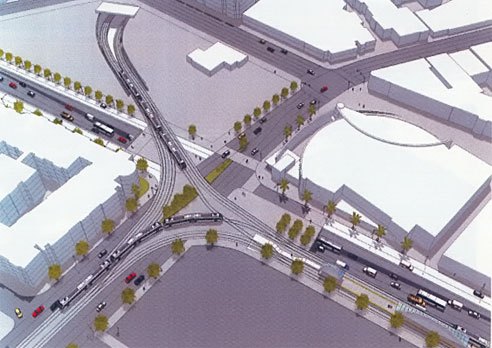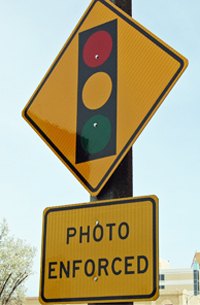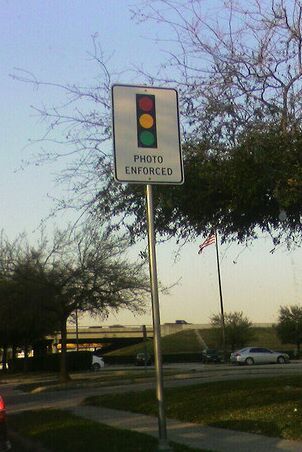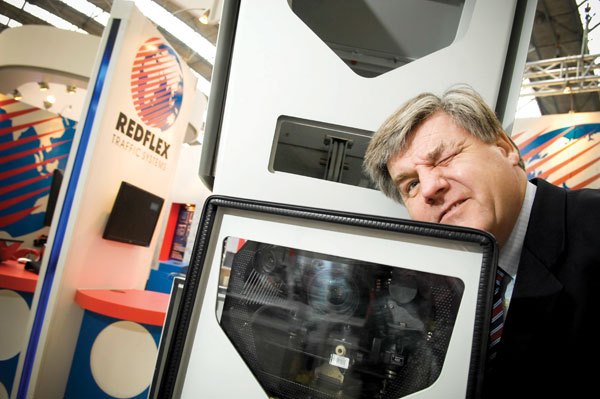#Traffic
Wisconsin Appeals Court: Backing Up Quickly On An Empty Road Is Suspicious
Police can stop a driver for backing up quickly on an empty road in the middle of the night, the Wisconsin Court of Appeals ruled last Thursday. At around 1:35am on July 28, 2009, city of Tomah Police Officer Jarrod Furlano watched from a parking lot as Matthew Pudlow backed up his car at East McCoy Boulevard to get into the left-hand turn lane so he could turn onto North Superior Avenue. No other cars were anywhere near. Pudlow’s car did not swerve, hit any curb or squeal its tires.
What's Wrong With This Picture: The Modern Speedbump Edition
California: Red Light Camera Company Gives City a Ticket
The Grand Terrace, California city council on Tuesday reluctantly voted to pay Redflex Traffic Systems $72,203.75 after the Australian company threatened to impose a $27,500 late fee on the city if it did not pay up immediately. Redflex operates the red light camera program at two intersections, and as of July 1 the company had mailed out 4283 fines worth $446 each. While Grand Terrace officials expected that the system would be a money-maker, the program to date has only enriched the county, the state, the courts and Redflex, which insisted on the additional cash payment.
Missouri State Auditor Defunds Speed Trap City
A notorious Missouri speed trap town was busted Wednesday by the state auditor for violating the law. Randolph, Missouri has a population of just 47 people, but the police department last year dished out 3132 fines — nearly all speeding tickets issued to motorists passing through on Highway 210. A formal examination of the city’s book uncovered the fact that Randolph made more than thirty-five percent of its revenue from freeway traffic ticket, in violation of the Macks Creek law, an anti-speed trap statute named for a town that went bankrupt after its ability to issue speeding tickets was revoked.
Michigan House Votes to End Speeding Ticket Tax
The Michigan state House of Representatives yesterday voted unanimously to repeal its so-called driver responsibility fee program, an unpopular tax on traffic citations. State Representative Bettie C. Scott (D-Detroit) was the primary sponsor of legislation that will end most of the fees by January 1, 2012 and, before then, cut the amount motorists owe by half.
“Obviously we must do what it takes to keep our roads safe for all travelers, but driver responsibility fees place an onerous and unnecessary financial burden on too many Michigan drivers,” Scott said in a statement. “The Driver Responsibility Act is flawed legislation that has failed the test of time. It has unfairly penalized our hard-working residents during one of the worst financial crises we’ve ever seen.”
Washington Supreme Court: Anti-Traffic Camera Vote Will Happen
The Washington state Supreme Court on Friday rejected the motion filed on behalf of a traffic camera company to block a public vote on the use of automated ticketing machines. In a two-sentence order, the court refused to intervene in the scheduled November 2 election in the city of Mukilteo where residents had signed a petition forcing a red light camera and speed camera ban onto the ballot. The denial of a motion for an emergency injunction came a month after the Snohomish County Superior Court also declined to stand between the voters and the ballot box ( view decision).
Los Angeles: Metro Accident Lawsuit Illustrates Light Rail Danger
More and more cities are thinking about installing light rail on city streets as the federal government holds out the prospect of greater subsidies diverted from gasoline tax funds. The California Court of Appeal on August 30 ruled that a lower court erred in throwing out a lawsuit against the city of Los Angeles for negligence in a fatal accident involving a metro Blue Line train. The incident reveals the significant threat high-speed rail can pose when run on streets designed for automobiles.
Missouri: Federal Judge Denies Red Light Camera Class Action Refund
Fighting speed camera and red light camera tickets in federal court is becoming increasingly difficult as yet another US district court judge yesterday embraced the use of automated ticketing machines. Judge Nanette K. Laughrey dismissed the class action lawsuit that Gregory Mills had filed against the city of Springfield and Lasercraft, a private vendor that has since been bought out by American Traffic Solutions. Mills argued that because the Missouri Supreme Court in March struck down the city’s program as illegal ( view decision), those who received tickets were entitled to a refund.
Texas: ATS Labels Anti-Traffic Camera Initiatives Racist
The citizen-led groups that want the public to decide the future of red light cameras are racist, according to lawsuits filed by American Traffic Solutions (ATS) in a pair of Texas cities. The Arizona-based photo enforcement firm filed in a state court in Baytown on Thursday and then an ATS-funded front group filed an identical case in a federal court in Houston on Friday. Residents in both cities signed petitions placing a ban on automated ticketing machines onto the November 2 ballot, but ATS cites the landmark Voting Rights Act of 1965 as a reason to block these votes.
Red Light Camera Firms Raise Stakes in Court Battle
While red light camera firms are facing significant legal peril as vehicle owners in California and Florida are fighting citations in court through class action lawsuits, the stakes are even higher when the companies themselves battle one another in the courtroom. The US Court of Appeals for the Ninth Circuit is now reviewing a number of issues brought in the suit filed by American Traffic Solutions (ATS) against its Australian rival, Redflex Traffic Systems.
California: Red Light Camera Programs Face Class Action Suit
A team of experienced class action lawyers is taking on California’s red light camera industry, and photo enforcement companies are expressing unease. Last month, the law firm of Pearson Simon Warshaw and Penny, LLP filed suit in San Mateo County Superior Court arguing that tickets issued throughout the Golden State since January 1, 2004 should be refunded where the photo enforcement contracts violated a state law mandating flat-rate compensation to companies like Redflex Traffic Systems. Redflex referred to the case as a particular business risk in an August 25 filing with the Australian Securities Exchange.
Canada: Court Faults Police Cash Grab
An Ontario, Canada judge in July faulted the Ontario Provincial Police (OPP) and Attorney General of Ontario for attempting to confiscate $46,078 contrary to the law. Officer Paul Barkley had pulled over a 2000 Mazda traveling on Highway 401 near Morrisburg just after midnight on October 16, 2009. Barkley had assumed the driver, Remus Petran, might have been drunk because he was driving below the speed limit. After speaking to Petran, who was sober, Barkley decided to search the vehicle.
In the Mazda’s trunk, Barkley found a gym bag containing CDN $74,980. Petran explained that he worked in construction and was paid in cash. For this, Petran was arrested for possession of property obtained by crime and his car towed away. After police found no evidence of a crime, Petran was unconditionally released with his car and without any charges filed — but police kept the cash.
LAPD Test Finds License Plate Covers, Sprays Ineffective
The Institute of Transportation Engineers Journal published in May the results of an extensive Los Angeles, California Police Department evaluation of the effectiveness of license plate covers and sprays designed to defeat automated ticketing machines. The results showed that the popular countermeasures did not work well under actual field conditions using the red light cameras operated in the city by Nestor Traffic Systems (the firm has since gone bankrupt and American Traffic Solutions now runs the program).
California Legislature Votes to Cut Rolling Right Turn Fines
The California state Senate on Wednesday voted 63-11 to give final approval to a measure that will cut the fine for the most common type of red light camera violation in half. Under existing law, motorists who make safe, rolling right-hand turns at monitored intersections may receive a $500 bill in the mail from a private company operating on behalf of a municipality. In the past few years, the “California stop” at some locations have begun to account for up to 98 percent of automated ticketing machine citations.
Photo Ticket Firm Redflex Approaches Zero Profit
Despite collecting A$137 million in revenue from automated traffic ticketing, the Australian photo enforcement giant Redflex Traffic Systems yesterday announced its net profit before tax had fallen to a mere $442,000 for the first half of 2010. Redflex remains the number one player in the US market with US motorists providing 79 percent of the company’s ticket revenue. Redflex management, however, blamed recent losses primarily on “considerable public opposition” to photo radar and red light cameras in the US.






























Recent Comments